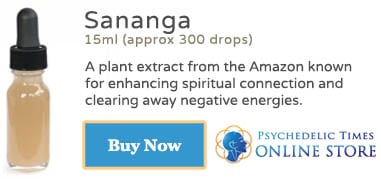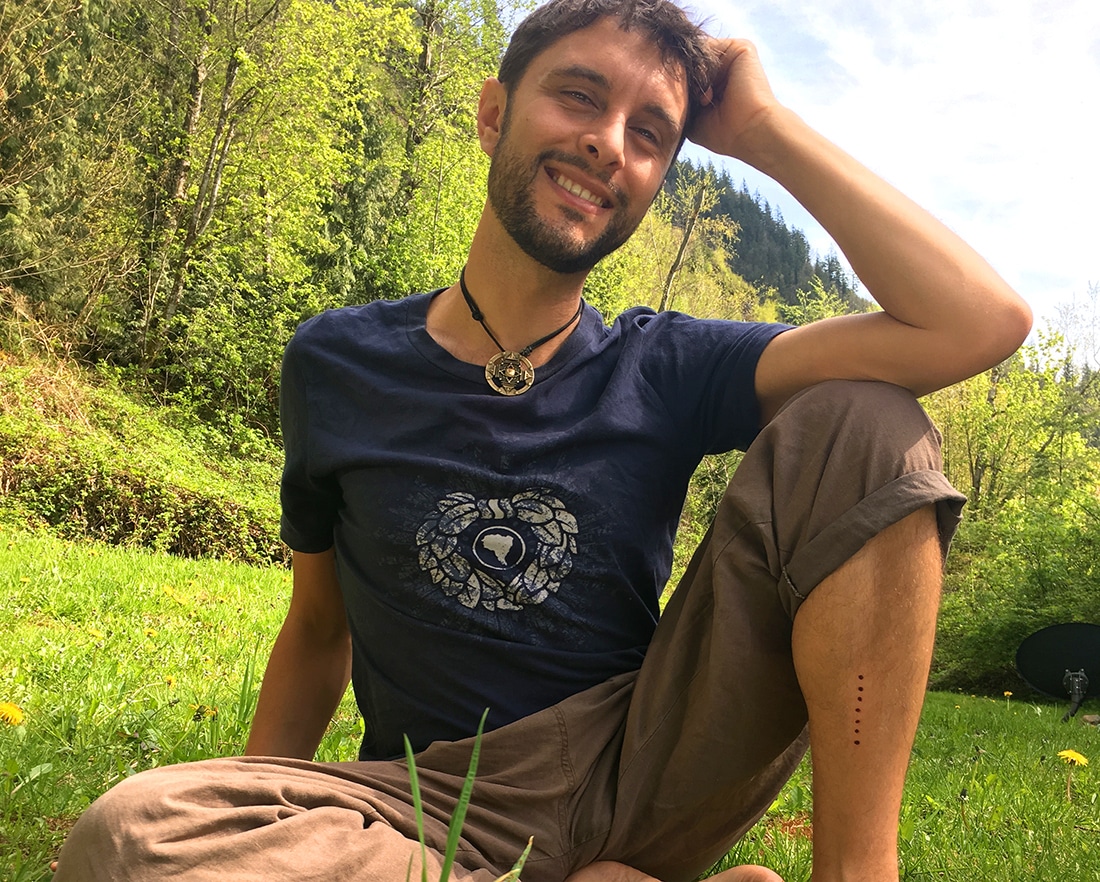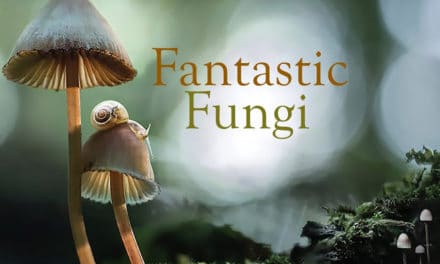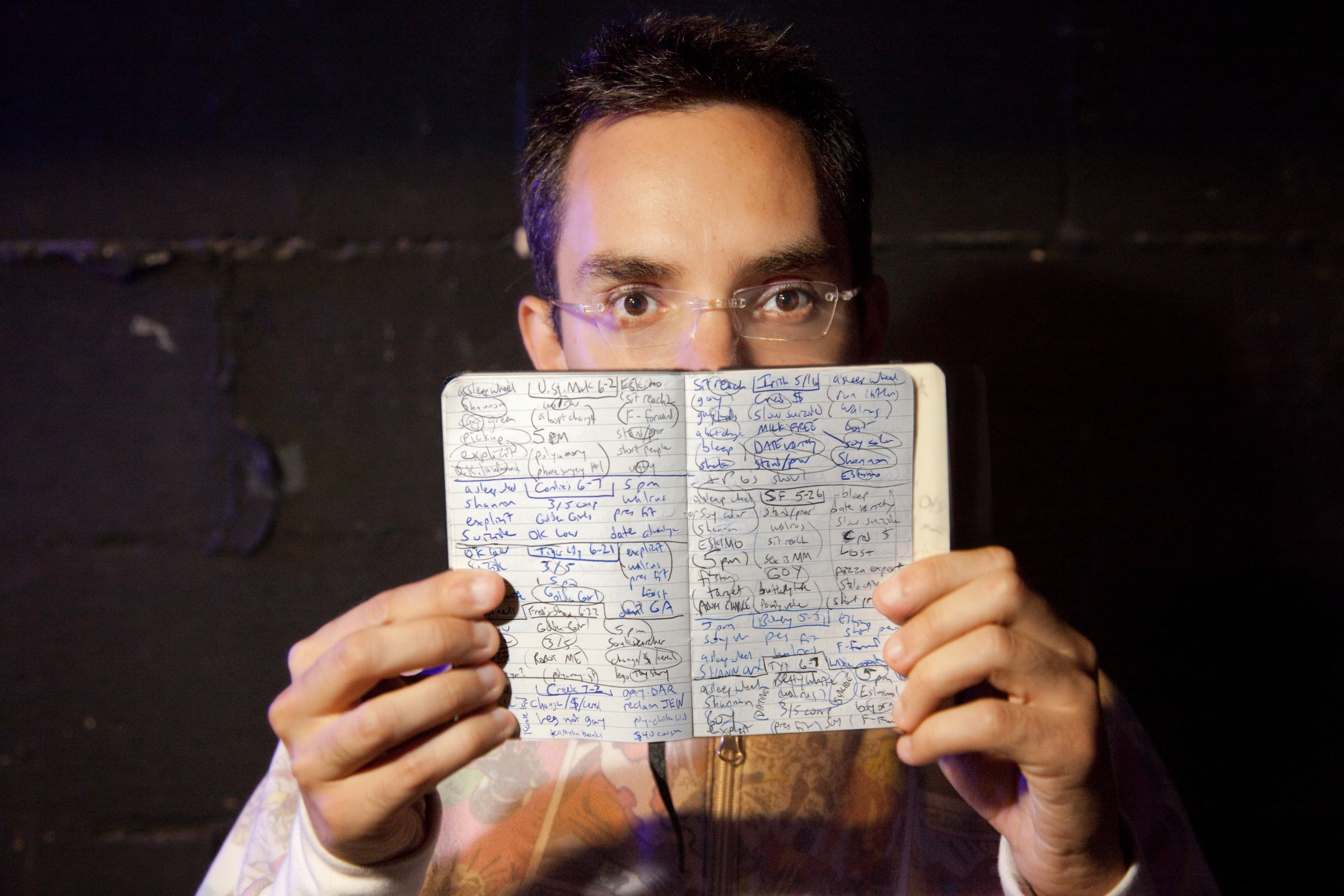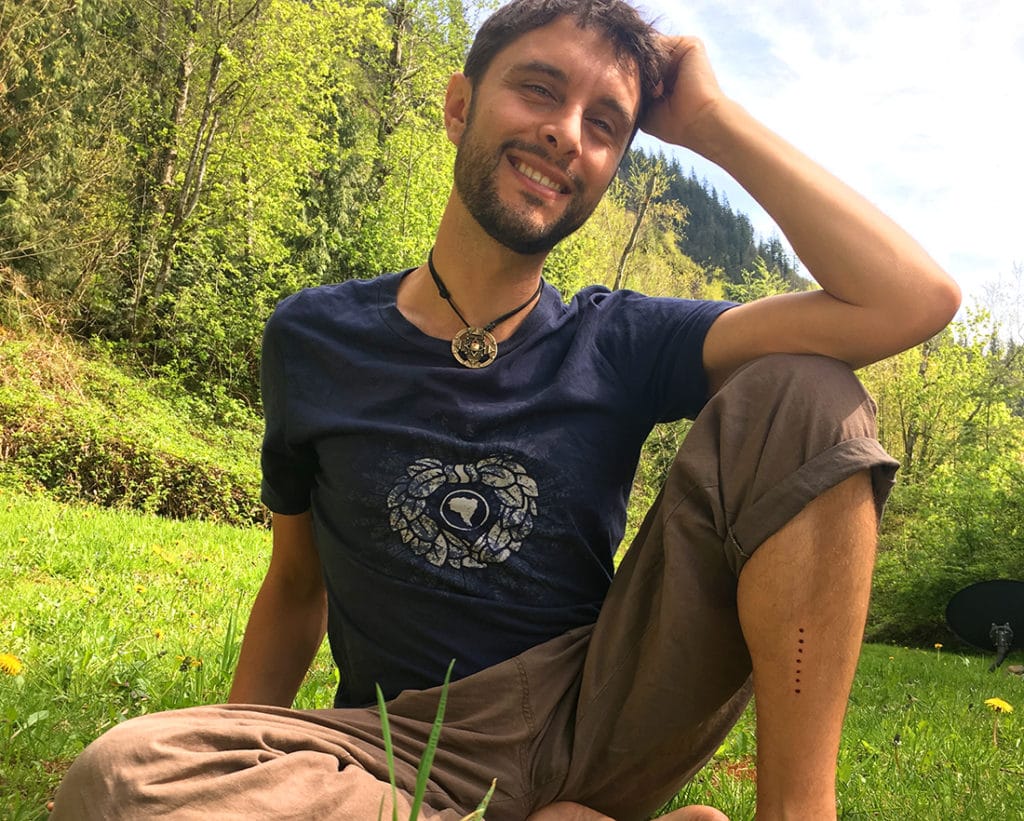
As more and more people flock to the Amazon to experience the healing power of ayahuasca, many of these seekers are being exposed to other rainforest medicines that are not entheogenic themselves, but are powerfully healing in their own right. Among these are the tobacco snuff rapé, sananga eyedrops, and the powerful tree frog venom known as kambo. Kambo is still a relatively obscure medicine in the Western world, but as more people experience it and hear of its potent cleansing effects, a demand is rising in the U.S. and around the world for trained practitioners who can safely and honorably administer the medicine.
The International Association of Kambo Practitioners is a nonprofit organization created to steward responsible kambo use outside of the Amazon. After spending years studying with tribes in the Amazon, Karen Kanya founded the IAKP to share the best practices of using and administering kambo so that those who want to share the frog medicine could seek formal training outside of the rainforest. Karen’s most recent certification program to train kambo practitioners was held in Maple Falls, Washington and was attended by Psychedelic Times founder Joe Mattia. We spoke with Joe to hear about what this kambo training was like, and how his own deep dive into the spirit of the frog transformed his life.
Thanks for sharing your experiences with us Joe. What were your impressions of the IAKP training program?
It was intense and amazing. There’s something to be said about what Karen created and how this program was formatted from start to finish. I’ve done a lot of personal development courses- men’s circles, yoga and yoga teacher trainings, and so forth- and this was by far one of the best-designed programs I’ve been involved in. The training is really incredible, but definitely not for everyone. Karen has a genuine relationship with the frog, and as I went through the training I got to see where she was coming from, her authenticity and her truth in carrying on this work.
Can you describe what the program was like?
The program was in a two-week format. Some of the attendees had done some form of kambo training in the past, and others like me had experienced kambo before but had no formal training. This was part one of a three year program that can eventually lead to Advanced Course and Master Practitioner programs for people who want to dedicate themselves to this practice and become full time practitioners, or even teachers.
We did kambo five times over the course of the two week period. Our first treatment was a self treatment. She taught us how to do the burns, we practiced on each other, and then we woke up in the morning into a day of silence and did a self treatment, having picked our spots the night before. In this self treatment you are left 100% on your own, and are not supposed to have any intervention short of a medical emergency. That really helped me to develop a relationship with the frog. A big part of the training was to be empowered to work with the frog on your own and to give yourself a treatment. That was my first time self-administering.
The next treatment was the warrior initiation, where you get three treatments in three hours, which I have to say was probably the hardest thing I’ve ever done in my entire life. I did 6, 8, and then 10 points, so a total of 24 points in 3 hours. What I got out of that was deep trust and connection- and I say this without trying to get too airy-fairy, but it felt like I got permission to work with kambo. After that I have no fear of this medicine. I respect it greatly, it is extremely powerful, but it is a friend and an ally. It felt like I earned my right to hold and facilitate the medicine for other people. The next treatments were an introduction to a variety of special treatments for specific parts of the body and energy systems (chakra and meridian points) where we all practiced on each other. Everyone had a chance to give and to receive.
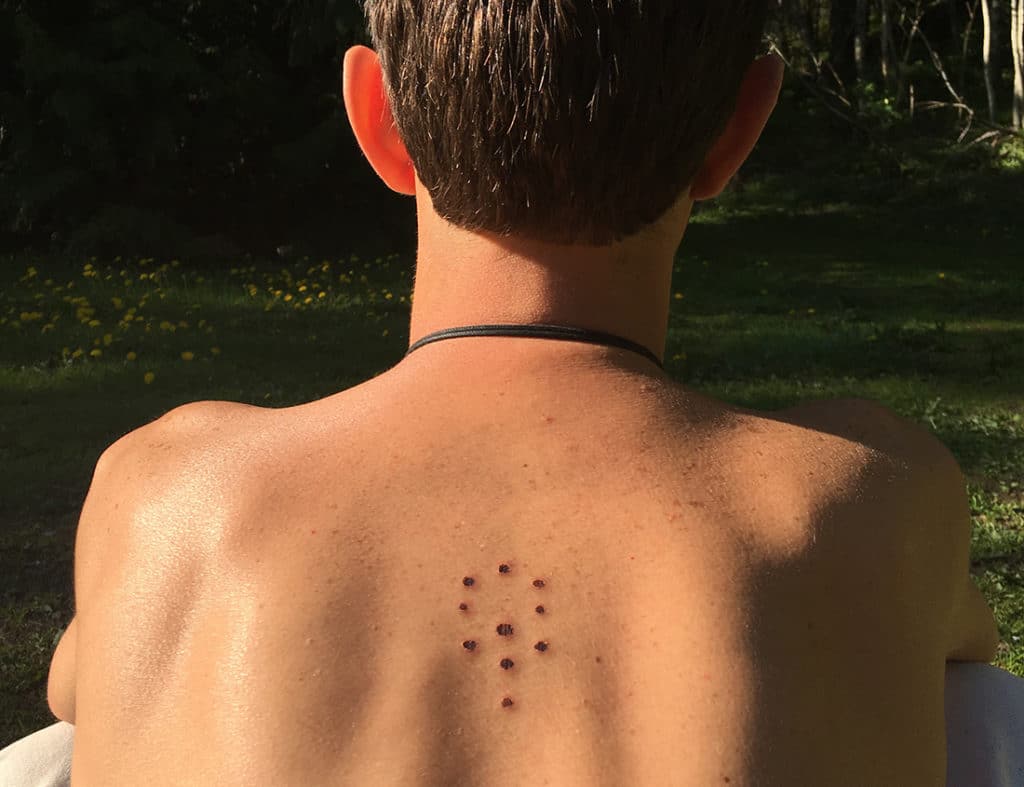
How is kambo helpful to use in conjunction with ayahuasca, and what are the benefits of using it on its own?
Kambo is not a psychedelic, but a lot of people who run in the psychedelic circles have been exposed to kambo through its association with ayahuasca. Some Amazonian tribes use kambo with ayahuasca, others just use ayahuasca, or just use kambo. Kambo is not mind-altering; it’s a purgative that acts as an initiation, or rite of passage. You’re not having visions or in an altered reality. It’s very safe, and legal in all countries.
Kambo offers a potent cleansing for the physical body, but it also can be very healing psychologically. Often we hold our emotions in our bodies, and by using kambo we can clear out deep-seated emotional issues and shake things out in a way that other medicines don’t offer in quite the same way.
For all these reasons, kambo can be very beneficial before a medicine journey like an ayahuasca retreat. Many of these retreats involve drinking the brew multiple times over a couple of days or even weeks. If you do a kambo ceremony beforehand, it’s almost like you get to start on night two. It allows you to preemptively work through the base layers and clear the way for higher-level work. Most people find kambo to be a very grounding and centering kind of experience.
With visionary plant medicines, often people will be in deep introspection the next day, and that’s often a good thing. There’s a time to be contemplative, to be thoughtful, and to reflect on one’s life. What I find for kambo is that people feel good, solid, and clear the next day. They feel present in their body, centered, and ready to go. It’s a very embodying experience, and has a lot to offer regardless of whether it’s used with ayahuasca or not.
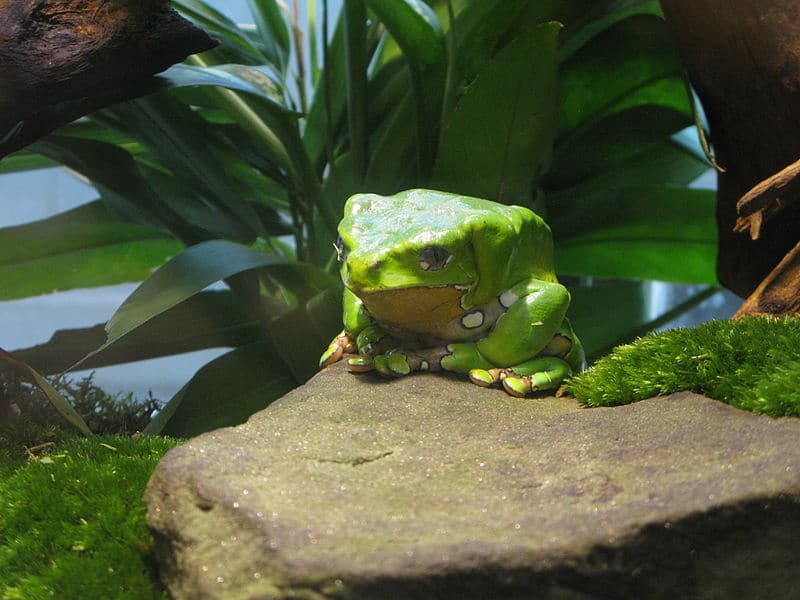
Phyllomedusa bicolor, the kambo tree frog. Image Source: Wikimedia user Jiel.
Are there any other thoughts you’d like to share about the IAKP training?
Everything was carefully and thoughtfully done in the program. Karen showed incredible grace in allowing everyone to ask questions and explore the process in their own way. With pretty much every other training I’ve been in, facilitators can sometimes grow slightly frustrated with onslaughts of questions and side-tracked conversations, but Karen held perfect poise and allowed all those things to work themselves out, then roped them back into the teaching. She probably could have packed the program into a single week, but with two weeks of training it allowed all of us to clarify and contextualize everything in our own ways.
During the two week training I made some very close friends that I’ve remained in contact with nearly every week since the training. There’s a tremendous amount of support from the other members of the group and I feel like I’ve made some lifelong friendships. In addition to the people I trained with, as a graduating member of the IAKP we all have access to a private online forum where we can ask questions and get support from the larger global IAKP practitioner base. I find this huge body of combined knowledge to be the most valuable resource and tool the IAKP offers. Sometimes when leaving a training there is a lack of support and people are left on their own to figure things out. I have turned to this group of fellow kambo practitioners a handful of times for answers regarding questions clients have, or how to approach different ailments.
Another thing I really like is that not everyone graduates at the end with their certificate. Some people are sent home with more work to do and have to come back and complete the program, so it’s not like you can just pay and become a practitioner. Up until the last day, I didn’t know if I was going to graduate or not. Since graduating and returning home, I’ve gone very slowly, and moved with the spirit of the frog. I started sharing kambo with my own close circle of friends and family doing one-on-one private treatments, which naturally progressed into two and then three people, and now we’re going to be holding circles with five and ten people. It’s an honor to share this medicine with others and I’m very grateful to Karen and the other students for the comprehensive training we all received.
We are grateful to Joe for sharing his thoughts with us, and for Karen and her important work at the IAKP.
